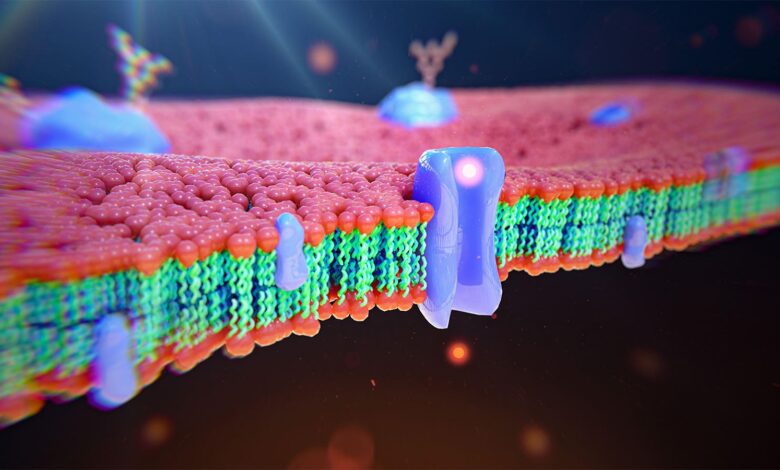Do Lipid Values in Adolescence Improve CVD Risk Prediction?

—
Including lipids did not prove superior to non-laboratory-based criteria alone, study finds
by
Jennifer Henderson, Enterprise & Investigative Writer, MedPage Today
October 14, 2024
Non-laboratory-based risk factors and lipids measured in adolescence independently predicted adult cardiovascular events, according to data from seven longitudinal cohort studies.
In a multivariable model using non-laboratory-based risk factors and lipid measurements during adolescence, the following were predictors of cardiovascular disease (CVD) events in adulthood (P<0.05), reported Joel Nuotio, MD, PhD, of the University of Turku in Finland, and colleagues:
- Elevated blood pressure: HR 1.25 (95% CI 1.03-1.52)
- Overweight: HR 1.76 (95% CI 1.42-2.18)
- Obesity: HR 2.19 (95% CI 1.62-2.98)
- Smoking: HR 1.63 (95% CI 1.37-1.95)
- High total cholesterol: HR 1.79 (95% CI 1.39-2.31)
However, the addition of lipids (total cholesterol and triglycerides) to the non-laboratory-based model (age, sex, blood pressure, body mass index, and smoking) did not improve prediction of CVD events: C-statistics were 0.75 for the lipid model and the non-laboratory-based model (P=0.82), they noted in Pediatrics.
When only fatal CVD events were used as an outcome, there was still no significant difference in prediction of these events when lipids were added to the non-lab-based model.
Recent data “suggest that the primordial prevention of CVD should be targeted to children and adolescents,” Nuotio and colleagues wrote. However, “there exists inconsistency in the messages that pediatric care providers are receiving from expert bodies.”
In 2011, the National Heart, Lung, and Blood Institute recommended universal screening of lipid levels in youth. However, in 2023, the U.S. Preventive Services Task Force did not recommend screening in general risk assessment, pointing out that the evidence to show its effectiveness was insufficient.
In a commentary accompanying the study, Samuel Gidding, MD, of Geisinger Health System in Danville, Pennsylvania, noted that Nuotio and colleagues “were able to show that the incremental value in knowing lipid values did not substantially improve risk prediction for adult heart disease. These data provide strong support for both office-based efforts to control easily identified and modifiable risk factors (e.g., hypertension, obesity, tobacco use, physical inactivity) and public health approaches directed at the same goals.”
“However, having knowledge about general dyslipidemia is not the only reason to perform a lipid profile in childhood,” Gidding added. “Familial hypercholesterolemia (FH) is an inherited cause of elevated low-density lipoprotein cholesterol, affecting about 1:300 people worldwide, and causing premature heart disease, if untreated. There are likely 30 to 40 people with FH in the i3C [International Childhood Cardiovascular Cohort], too small a number to provide outcome data, particularly if some of these individuals received statin treatment as a result of knowing their lipid levels.”
The study included 11,550 participants from seven longitudinal cohort studies in the U.S., Australia, and Finland with risk factor measurements in adolescence who were followed into adulthood. The main outcomes were medically adjudicated fatal or nonfatal CVD events, including myocardial infarction, stroke, transient ischemic attack, ischemic heart failure, angina, peripheral artery disease, carotid intervention, abdominal aortic aneurysm, or coronary revascularization, occurring after age 25.
Of the participants (55.1% female, mean age 50), 4.4% had confirmed cardiovascular events.
In univariable analyses that assessed relationships between risk factors and CVD events, the authors also found significant associations for age, sex, and most categorical risk factors, including:
- Overweight: HR 1.96 (95% CI 1.59-2.42)
- Obesity: HR 2.73 (95% CI 2.04-3.65)
- Elevated blood pressure: HR 1.45 (95% CI 1.20-1.75)
- Smoking: HR 1.67 (95% CI 1.40-1.99)
- High total cholesterol: HR 2.03 (95% CI 1.58-2.61)
- High triglycerides: HR 1.82 (95% CI 1.39-2.37)
- Borderline low high-density lipoprotein (HDL) cholesterol: HR 1.53 (95% CI 1.05-2.24)
- Low HDL cholesterol: HR 1.74 (95% CI 1.23-2.44)
- High low-density lipoprotein (LDL) cholesterol: HR 1.93 (95% CI 1.39-2.68)
Study limitations included that it was not possible to locate half of the original adolescent participants, and that medical records were not available for some participants who self-reported a cardiovascular event, Nuotio and colleagues noted.
They were also not able to consider family history — which may influence CVD risk factors — because data were not available for all study cohorts, they added. Finally, lipid measurement methods differed between study cohorts.
-
![author['full_name']](https://clf1.medpagetoday.com/media/images/author/Jennifer_Henderson_Photo_188.jpg)
Jennifer Henderson joined MedPage Today as an enterprise and investigative writer in Jan. 2021. She has covered the healthcare industry in NYC, life sciences and the business of law, among other areas.
Disclosures
This work was supported by the NIH, as well as the Australian National Health and Medical Research Council Project, the Academy of Finland, the Social Insurance Institution of Finland, Kuopio, Tampere, Turku University Hospital Medical Funds, Juho Vainio Foundation, Paavo Nurmi Foundation, Finnish Foundation of Cardiovascular Research, Finnish Cultural Foundation, Sigrid Juselius Foundation, and Yrjö Jahnsson Foundation.
The study authors reported no conflicts of interest.
Gidding reported serving as a consultant for Esperion Therapeutics.
Primary Source
Pediatrics
Source Reference: Nuotio J, et al “Predictors in youth of adult cardiovascular events” Pediatrics 2024; DOI: 10.1542/peds.2024-066736.
Secondary Source
Pediatrics
Source Reference: Gidding SS “To screen or not to screen: that is the cholesterol question” Pediatrics 2024; DOI: 10.1542/peds.2024-068548.



